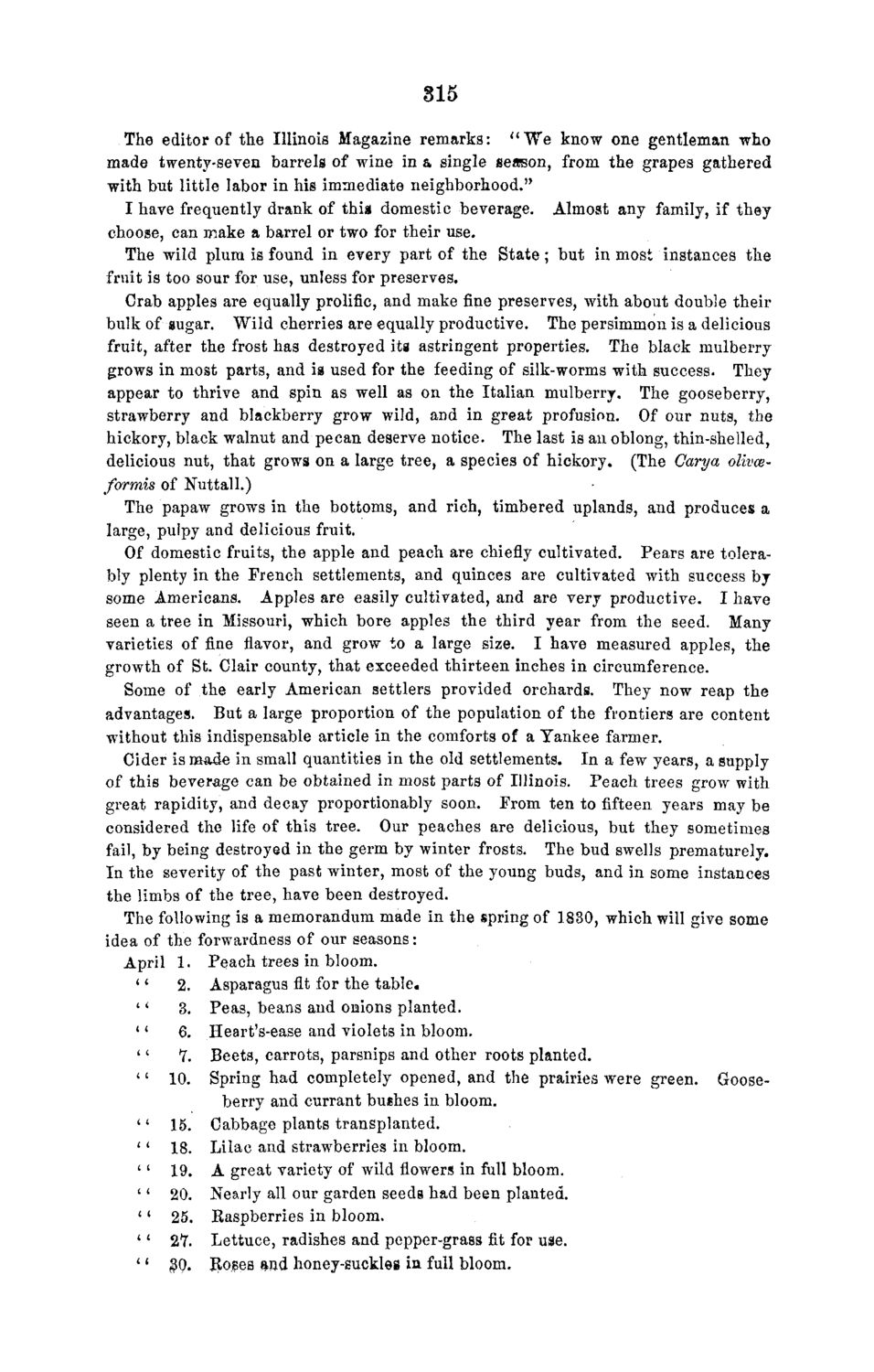| |
| |
Caption: Board of Trustees Minutes - 1868
This is a reduced-resolution page image for fast online browsing.

EXTRACTED TEXT FROM PAGE:
815 The editor of the Illinois Magazine remarks: " W e know one gentleman who made twenty-seven barrels of wine in a single season, from the grapes gathered with but little labor in his immediate neighborhood." I have frequently drank of this domestic beverage. Almost any family, if they choose, can make a barrel or two for their use. The wild plum is found in every part of the State; but in most instances the fruit is too sour for use, unless for preserves. Crab apples are equally prolific, and make fine preserves, with about double their bulk of sugar. Wild cherries are equally productive. The persimmon is a delicious fruit, after the frost has destroyed its astringent properties. The black mulberry grows in most parts, and is used for the feeding of silk-worms with success. They appear to thrive and spin as well as on the Italian mulberry. The gooseberry, strawberry and blackberry grow wild, and in great profusion. Of our nuts, the hickory, black walnut and pecan deserve notice. The last is an oblong, thin-shelled, delicious nut, that grows on a large tree, a species of hickory. (The Gary a olivcefor mis of Nut tall.) The papaw grows in the bottoms, and rich, timbered uplands, and produces a large, pulpy and delicious fruit. Of domestic fruits, the apple and peach are chiefly cultivated. Pears are tolerably plenty in the French settlements, and quinces are cultivated with success by some Americans. Apples are easily cultivated, and are very productive. I have seen a tree in Missouri, which bore apples the third year from the seed. Many varieties of fine flavor, and grow to a large size. I have measured apples, the growth of St. Clair county, that exceeded thirteen inches in circumference. Some of the early American settlers provided orchards. They now reap the advantages. But a large proportion of the population of the frontiers are content without this indispensable article in the comforts of a Yankee farmer. Cider is made in small quantities in the old settlements. In a few years, a supply of this beverage can be obtained in most parts of Illinois. Peach trees grow with great rapidity, and decay proportionably soon. From ten to fifteen years may be considered the life of this tree. Our peaches are delicious, but they sometimes fail, by being destroyed in the germ by winter frosts. The bud swells prematurely. In the severity of the past winter, most of the young buds, and in some instances the limbs of the tree, have been destroyed. The following is a memorandum made in the spring of 1830, which will give some idea of the forwardness of our seasons: April 1. Peach trees in bloom. 2. Asparagus fit for the table, 3. Peas, beans and onions planted. 6. Heart's-ease and violets in bloom. 7. Beets, carrots, parsnips and other roots planted. 10. Spring had completely opened, and the prairies were green. Gooseberry and currant bushes in bloom. 15. Cabbage plants transplanted. 18. Lilac and strawberries in bloom. 19. A great variety of wild flowers in full bloom. 20. Nearly all our garden seeds had been planted. 25. Raspberries in bloom. 27. Lettuce, radishes and pepper-grass fit for use. $0. Eoses and honey-suckles in full bloom.
| |